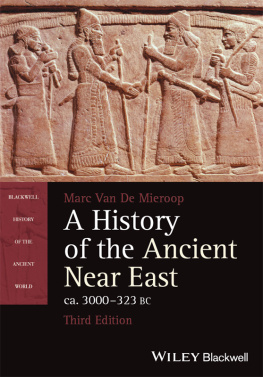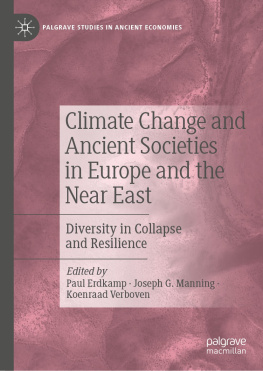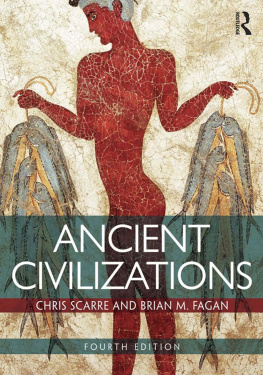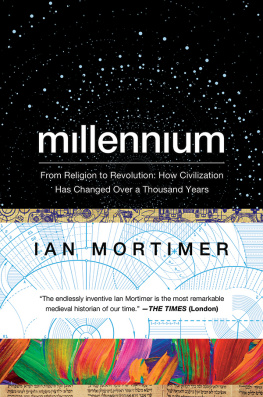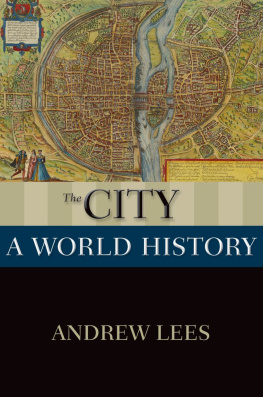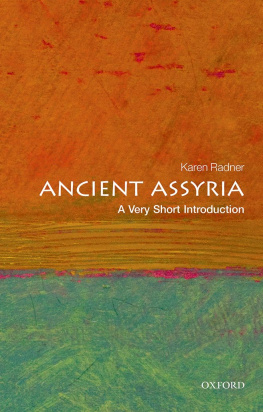
Blackwell History of the Ancient World
This series provides a new narrative history of the ancient world, from the beginnings of civilization in the ancient Near East and Egypt to the fall of Constantinople. Written by experts in their fields, the books in the series offer authoritative accessible surveys for students and general readers alike.
Published
A History of the Ancient Near East ca. 3000323 BC, third edition
Marc Van De Mieroop
A History of the Later Roman Empire, AD 284621, second edition
Stephen Mitchell
A History of the Hellenistic World
R. Malcolm Errington
A History of the Ancient Near East ca. 3000323 BC, second edition
Marc Van De Mieroop
A History of the Classical Greek World, second edition
P. J. Rhodes
A History of the Later Roman Empire, AD 284621
Stephen Mitchell
A History of Byzantium, second edition
Timothy E. Gregory
A History of Ancient Egypt ca. 3000323 BC
Marc Van De Mieroop
A History of the Archaic Greek World, second edition
Jonathan M. Hall
A History of Greece, ca. 1300 to 30 BC
Victor Parker
In Preparation
A History of the Roman Republic
John Rich
A History of the Roman Empire
Michael Peachin
A History of Babylon, 2200 BC75 AD
Paul-Alain Beaulieu
A History of the Achaemenid Persian Empire
Maria Brosius
A History of the Ancient Near East
ca. 3000323 BC
Third Edition
Marc Van De Mieroop
This third edition first published 2016
2016 John Wiley & Sons, Inc.
Edition history: Blackwell Publishing Ltd (1e, 2004 and 2e, 2007)
Registered Office
John Wiley & Sons Ltd, The Atrium, Southern Gate, Chichester, West Sussex, PO19 8SQ, UK
Editorial Offices
350 Main Street, Malden, MA 02148-5020, USA
9600 Garsington Road, Oxford, OX4 2DQ, UK
The Atrium, Southern Gate, Chichester, West Sussex, PO19 8SQ, UK
For details of our global editorial offices, for customer services, and for information about how to apply for permission to reuse the copyright material in this book please see our website at www.wiley.com/wiley-blackwell.
The right of Marc Van De Mieroop to be identified as the author of this work has been asserted in accordance with the UK Copyright, Designs and Patents Act 1988.
All rights reserved. No part of this publication may be reproduced, stored in a retrieval system, or transmitted, in any form or by any means, electronic, mechanical, photocopying, recording or otherwise, except as permitted by the UK Copyright, Designs and Patents Act 1988, without the prior permission of the publisher.
Wiley also publishes its books in a variety of electronic formats. Some content that appears in print may not be available in electronic books.
Designations used by companies to distinguish their products are often claimed as trademarks. All brand names and product names used in this book are trade names, service marks, trademarks or registered trademarks of their respective owners. The publisher is not associated with any product or vendor mentioned in this book.
Limit of Liability/Disclaimer of Warranty: While the publisher and author have used their best efforts in preparing this book, they make no representations or warranties with respect to the accuracy or completeness of the contents of this book and specifically disclaim any implied warranties of merchantability or fitness for a particular purpose. It is sold on the understanding that the publisher is not engaged in rendering professional services and neither the publisher nor the author shall be liable for damages arising herefrom. If professional advice or other expert assistance is required, the services of a competent professional should be sought.
Library of Congress Cataloging-in-Publication Data
Van De Mieroop, Marc.
A history of the ancient Near East ca. 3000323 BC / Marc Van De Mieroop. Third edition.
pages cm
Includes bibliographical references and index.
ISBN 978-1-118-71816-2 (paperback)
1. Middle EastHistoryTo 622. I. Title.
DS62.2.V34 2016
939.4dc23
2015005041
A catalogue record for this book is available from the British Library.
Cover image: King Shalmaneser III meeting a Babylonian king, from pedestal of throne of Shalmaneser III,858824 BC Assyrian king, 9th century BC from Nimrud. Photo The Art Archive/Alamy.
Debates
Boxes
Documents
Preface
In the year 334 BC, a young king from Macedon and his well-trained army crossed from Europe into Asia, confronted the vast empire of Persia, and conquered it in the course of a decade. Alexander's troops marched through an antique world that contained the remains of thousands of years of earlier history. Their previous encounter with Greece could not have prepared them for what they saw in the Near East and Egypt. They entered cities like Uruk that had existed for three millennia, and visited pyramids and temples that had stood for almost as many years. This was a world steeped in history, not a world in decline, waiting for fresh inspiration. The city-dwellers knew their traditions were so ancient that they claimed they dated from the beginning of time itself. People wrote in scripts that had been used for almost thirty centuries, they read and copied texts that were hundreds of years old. These were not idle claims, as for a long time their lands had indeed been home to the most advanced cultures in the world, well before Greece had developed its great classical civilization.
It is in the Near East and northeast Africa that many of the elements we associate with advanced civilization first originated, including agriculture, cities, states, writing, laws, and many more. Because this region lies at the juncture of three continents, practices and concepts from numerous and diverse people came together there, inspired and complemented one another, and were used by the inhabitants to manipulate their surroundings. They created their environment rather than reacting to it. This had happened over many centuries, indeed millennia, through processes that saw developments both smooth and abrupt, reversals of fortune, and false starts. Today we are naturally attracted to finding out how and why such things happened, and who was involved. Nineteenth- and early twentieth-century scholarship used to trace the roots of modern civilization in the ancient history of this region, but an approach of this kind is no longer acceptable as we now realize that history is not just a long and uninterrupted evolution from a single source. We can assert, however, that in the Near East and northeast Africa, we are able to study for the first time in history how humans lived, in circumstances that include many of the elements of our own culture. We can study this on the basis of a written record as well as from material remains, since the first literate societies in world history are found there. And this study acquires greater poignancy because we often see the indigenous creation of cultural factors here, rather than elements borrowed from elsewhere.
The Near East and Egypt encompass a vast area, stretching from the Black Sea to the Aswan dam, and from the Aegean Sea to the highlands of Iran, an area that was densely inhabited throughout its history. The diversity of cultures and histories in this entire stretch is immense, too vast to describe in a single book. Therefore I shall deal only with the Near East, that is, the regions of the Asian continent, and shall exclude Egypt from the discussion. This still leaves us to deal with an enormous collection of peoples, cultures, languages, and traditions. There is a certain unity in this diversity, however, that makes combined study desirable. In the variety we can see numerous similarities. Political and military circumstances at times brought many of these people together under a single system, and we can see almost constant processes of social and cultural interaction and exchange that connected the varied regions.
Next page
